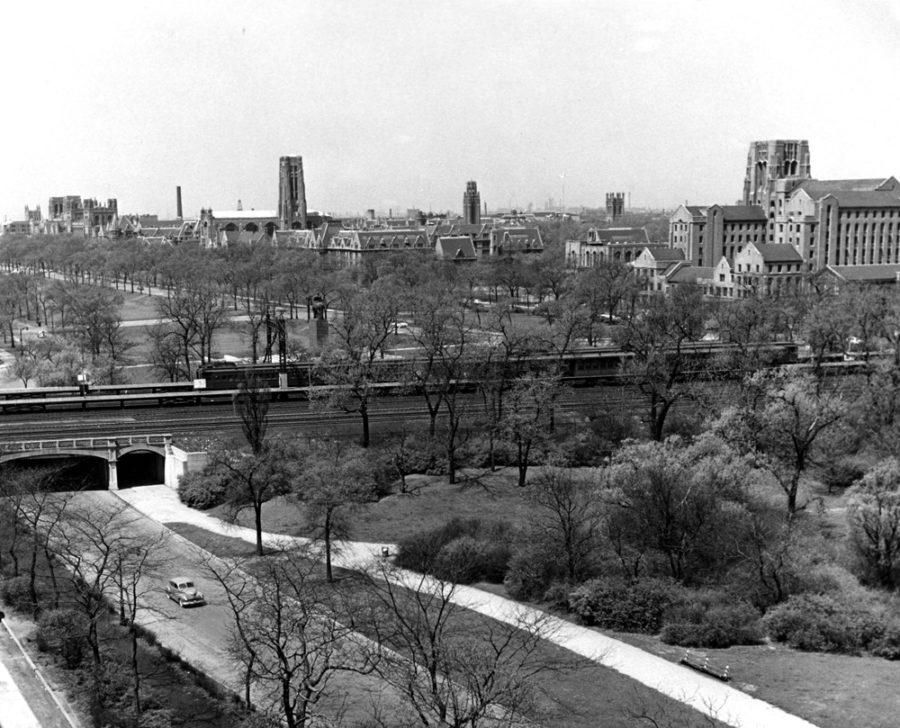The Maroon has a particular mandate, narrower than most other media organizations: We cover the University of Chicago and the decisions it makes. But the University of Chicago is one of the most consequential institutions in the city, and certainly on the South Side. It is the area’s second largest employer, a major real estate player, a self-contained law enforcement agency, and a massive economic and cultural engine with the power to shape huge swaths of the city and the lives of people who live there. It is impossible to ignore the role that race plays in the University’s interactions with the South Side. At The Maroon, this relationship, and its implications for racial equity, frequently takes center stage in our coverage—whether it’s news about the Obama Center’s plans to break ground after a protracted fight with the Community Benefits Coalition or a sit in by #CareNotCops to pressure administrators to abolish the University of Chicago Police Department (UCPD). This editorial series aims to delve deeper into the University’s relationship to the South Side and to begin setting a new course for how we approach this relationship in our pages.
“Community members’ opinions” and “community engagement” are inescapable phrases in this coverage. Yet in the pages of The Maroon—from the opinion pages to news and features—South Siders’ stories appear sporadically, and usually in service of making a point. Some of this makes sense. The Maroon is, after all, written by University of Chicago affiliates, and the University community is our primary audience. But when the Maroon Editorial Board was composing our editorial about the abolition of the University of Chicago Police Department, the paucity of up-to-date, varied accounts and experiences of South Siders with UCPD, or with any other part of the University, was painfully obvious.
So the Maroon Editorial Board—16 staffers from across the paper, from reporters to editors—set out to change this. We considered whether this was appropriate for the editorial board to address. After much deliberation, we decided, yes, it was. Most editorials rest on previously covered news topics, but the journalistic tradition also includes reported opinion pieces, the tack we’ve taken with this series. When the board makes endorsements during election seasons, we wouldn’t dream of doing so without hearing from the candidates on the ballot. This case is similar. We didn’t want to make sweeping recommendations about how the University could improve its relationship to local non-affiliates without hearing from that population, the people who (if our suggestions were taken seriously) would be the most affected by the changes.
We met with more than a dozen residents, activists, University officials, and employees in putting together this series. What results is not the opinion of any one of these interview subjects. We asked them about their memories of interacting with the University, how the institution had shaped their worlds beyond campus, what they thought the institution did well and what they thought would make the University a better partner with the South Side. Our subjects’ answers varied as widely as their affiliations and backgrounds. We have tried to look at their collected experiences and think, as people operating from within the institution, about how those experiences suggested ways to improve the University as an institution that enriches human life, on the ground as well as in an intellectual capacity. We’ve divided the series into four installments. The first suggests how the University can be meaningfully more accessible to those not enrolled here. The second examines the University’s reach beyond the quadrangles, from real estate to community partnerships to the University of Chicago Charter Schools. The third recommends that the University establish a Reparative Justice Center to better partner with the South Side of Chicago as an educational institution and financial anchor. And “Shaping the Conversation” presents the question that anchors every editorial board debate: What is the historic and the current role of a student newspaper covering these problems, and what should our mission be going forward?
This editorial series is a statement of values as well as a set of recommendations. Our suggestions are inevitably informed by the opinions of the people who sit on the board, and who reflect the makeup of our staff overall. We write as young people informed by the paths each of us took to the University and The Maroon, by the failings and horrors of the world we are preparing to enter upon graduation, and where we see potential for positive change. As students, we have benefited a great deal from the intellectual and extracurricular offerings of the University. Our hope that the University can be an engine for good in the life of the South Side as it has been in our lives grounds these editorials.









